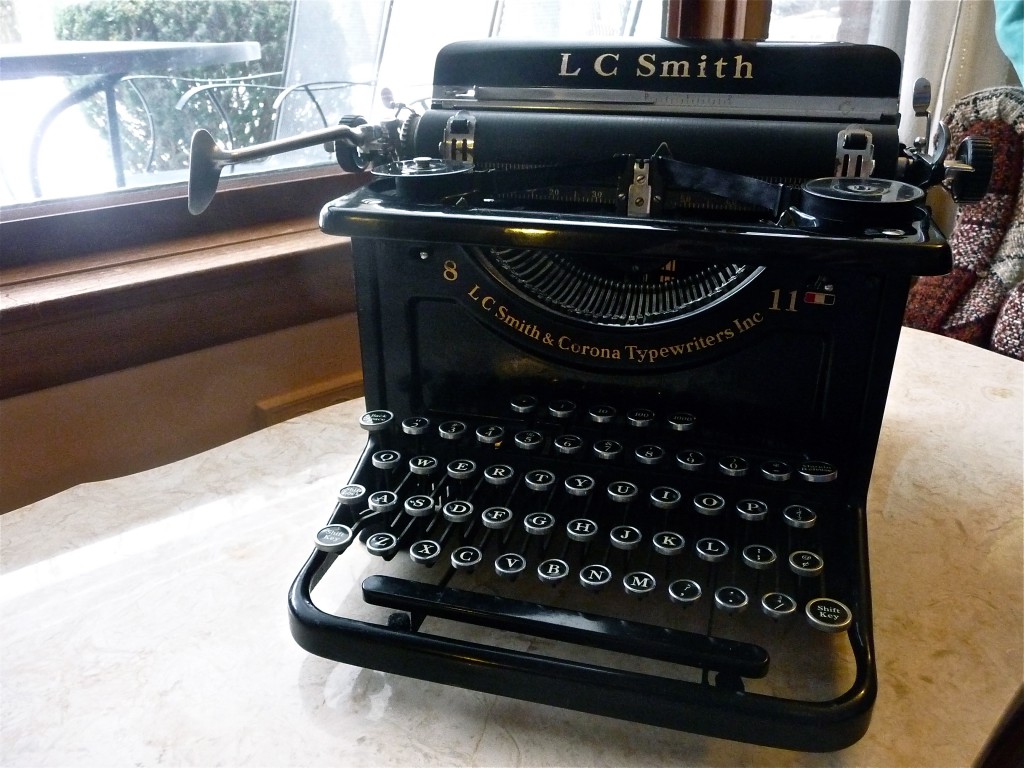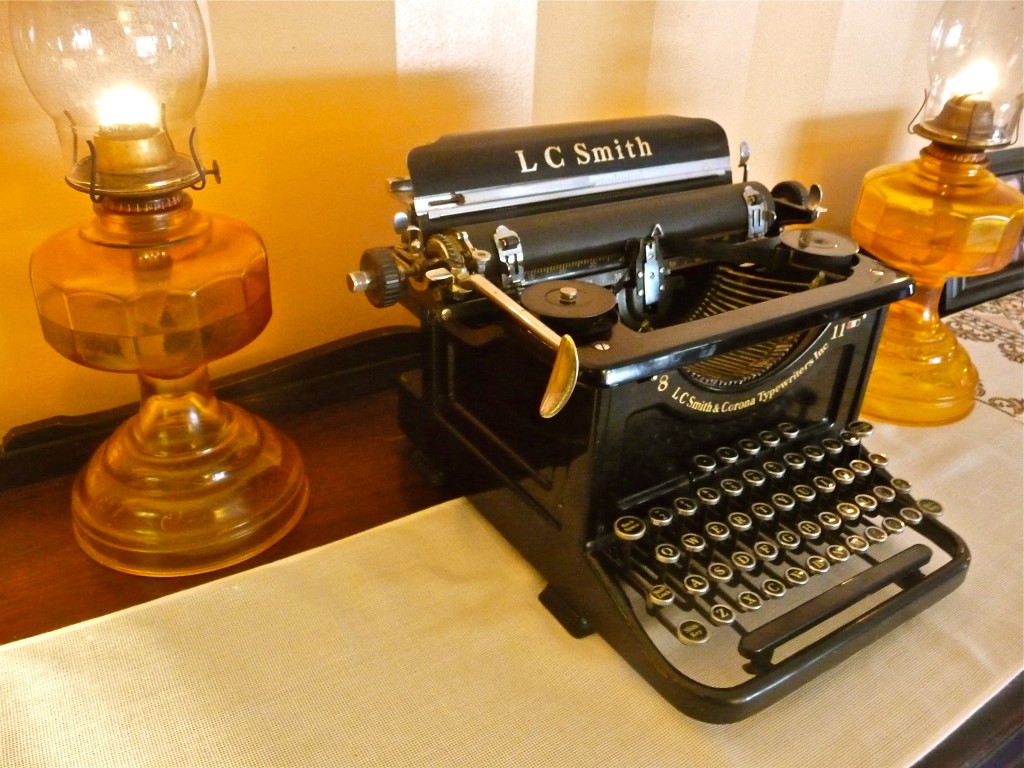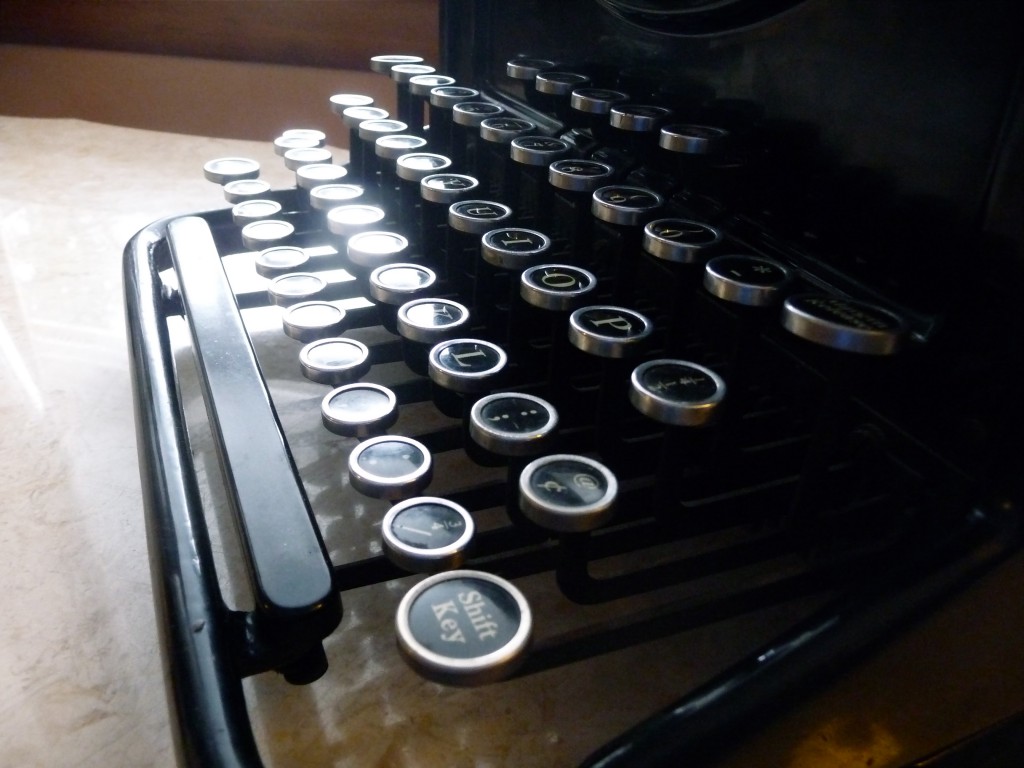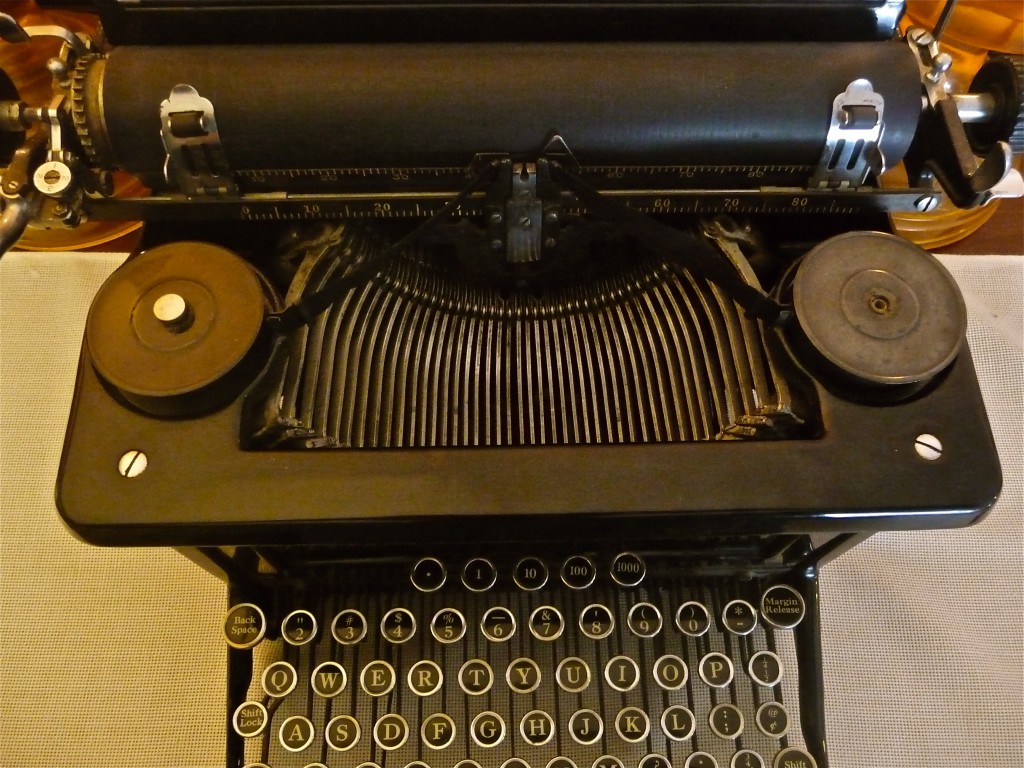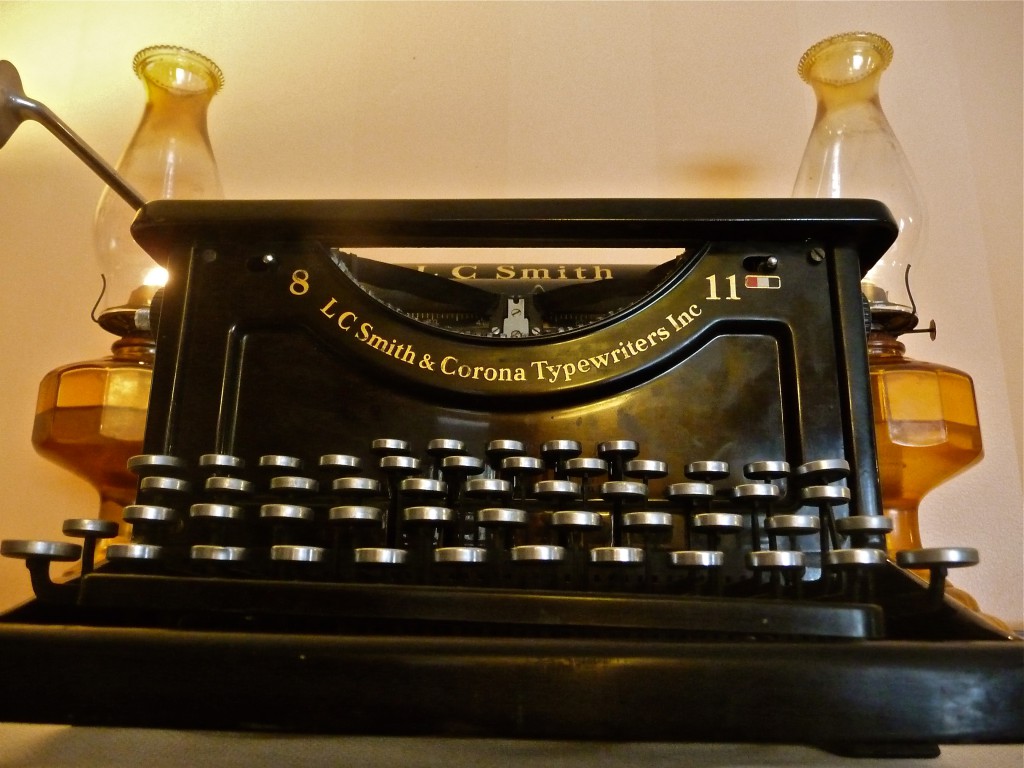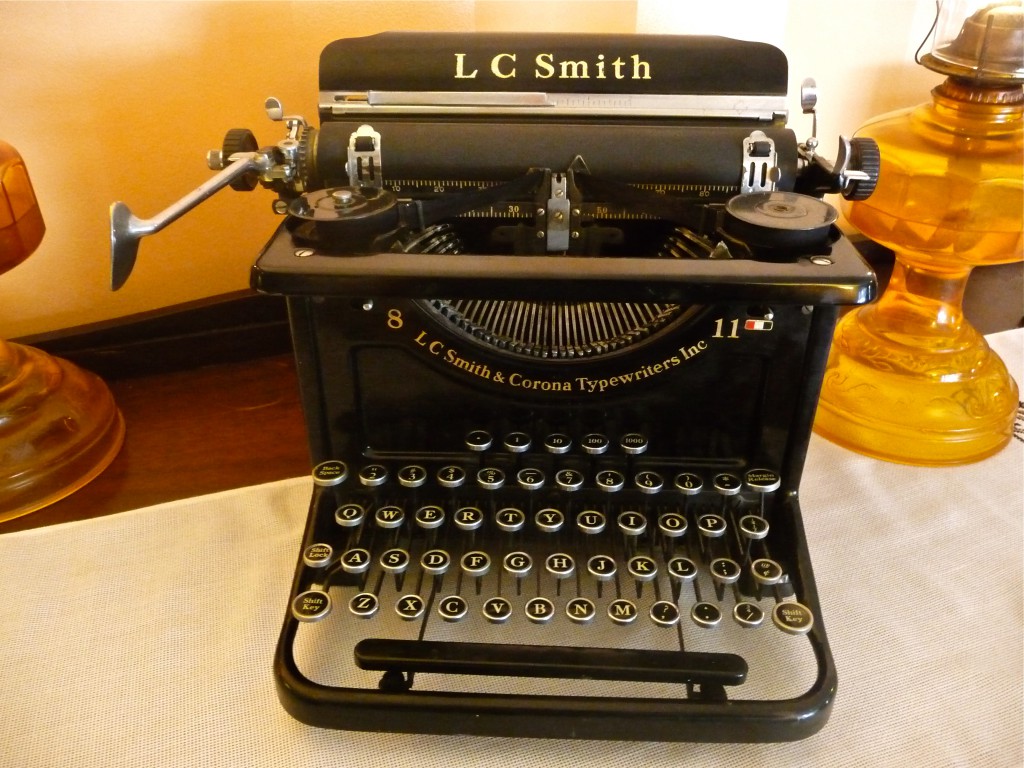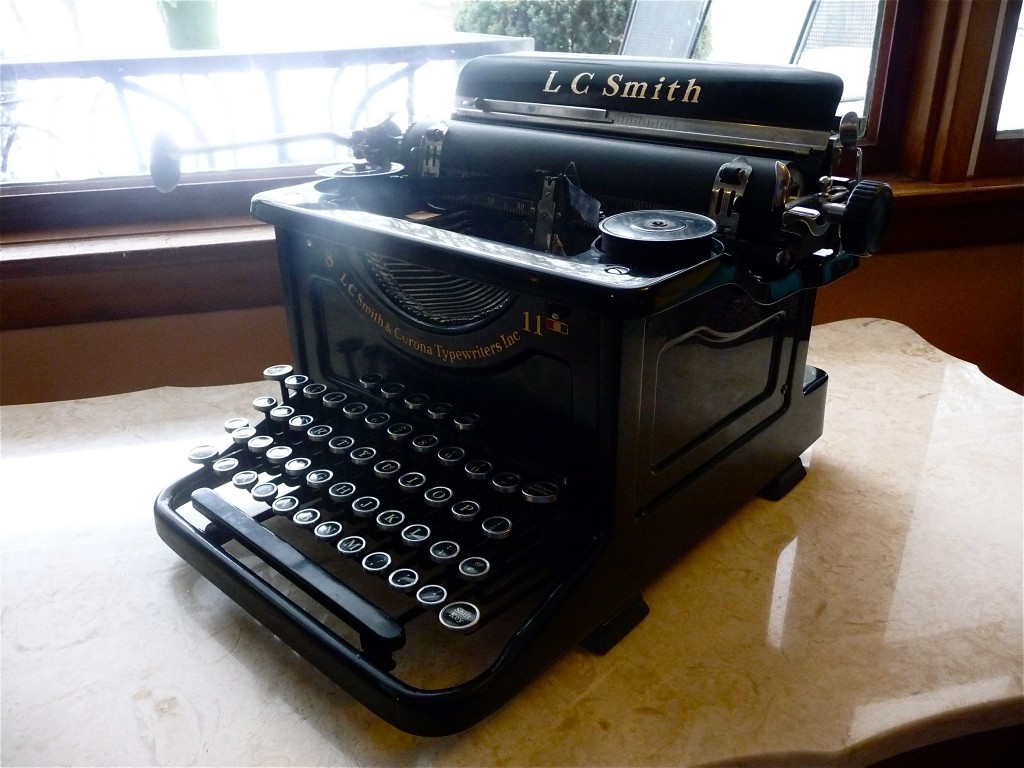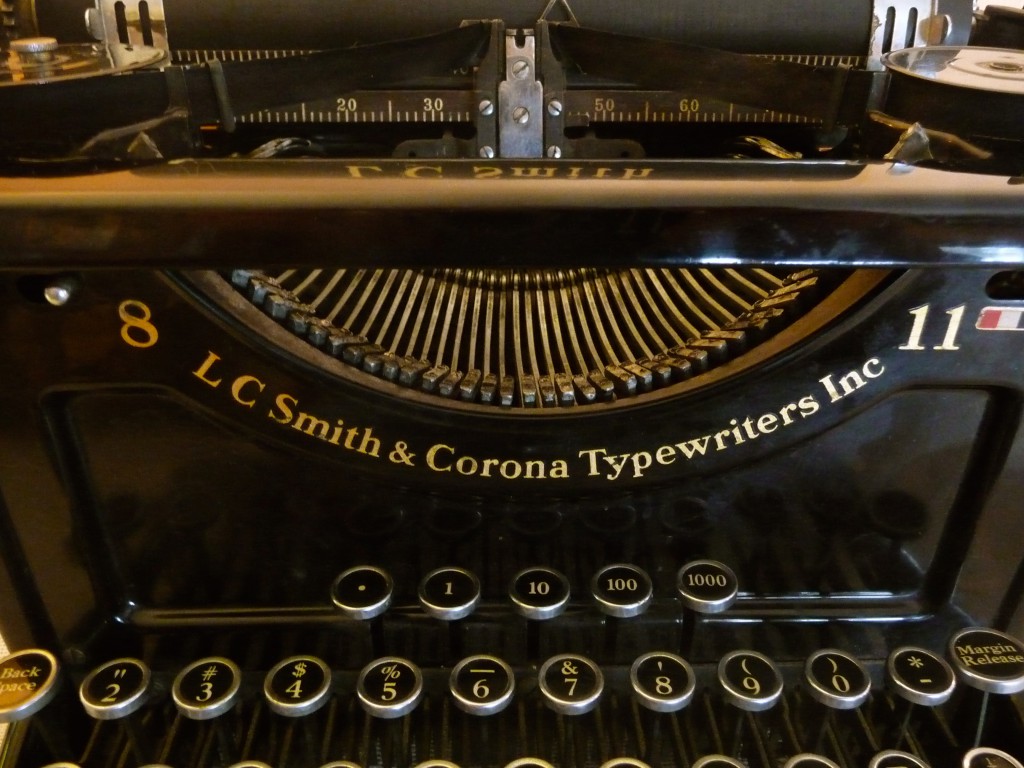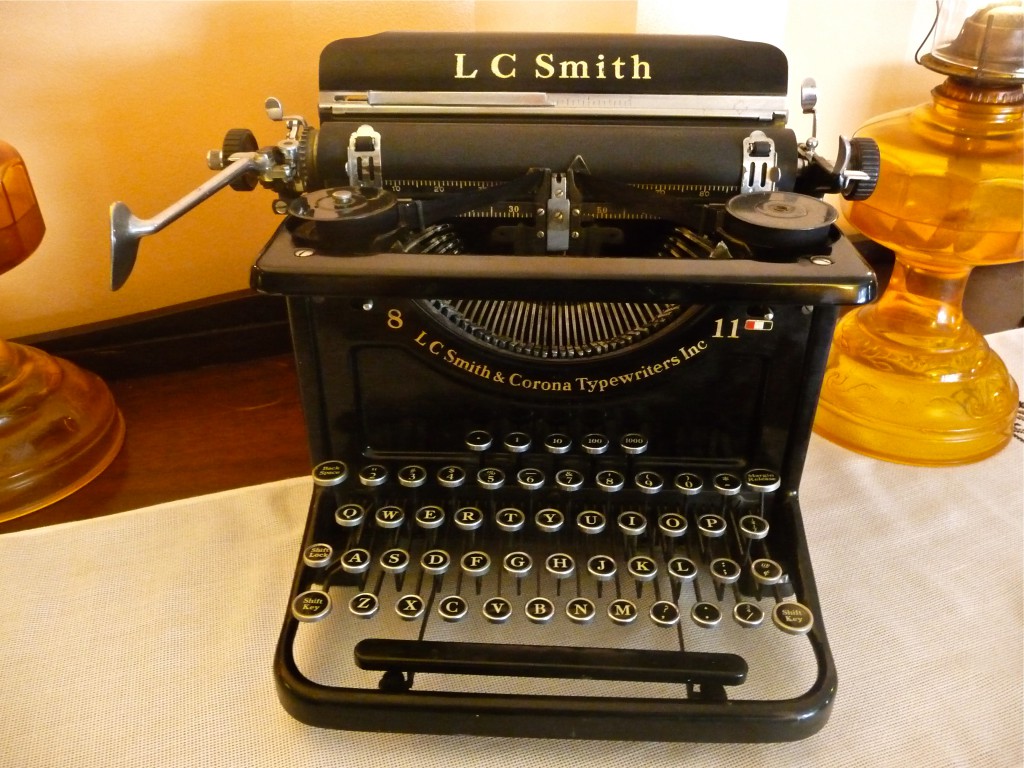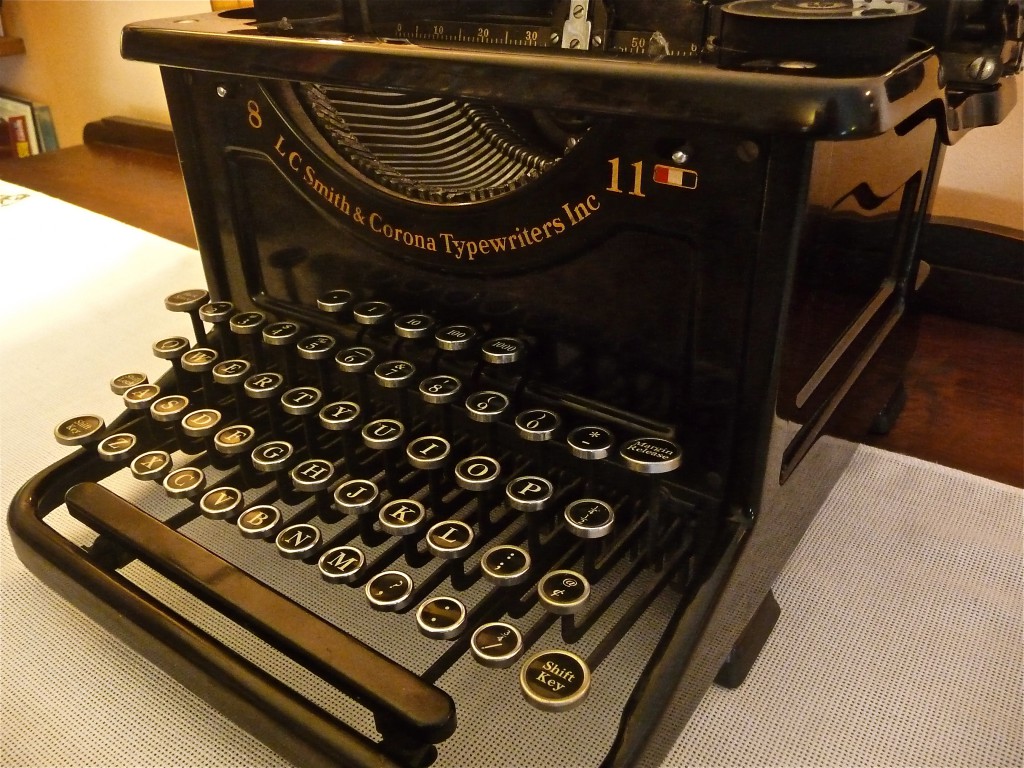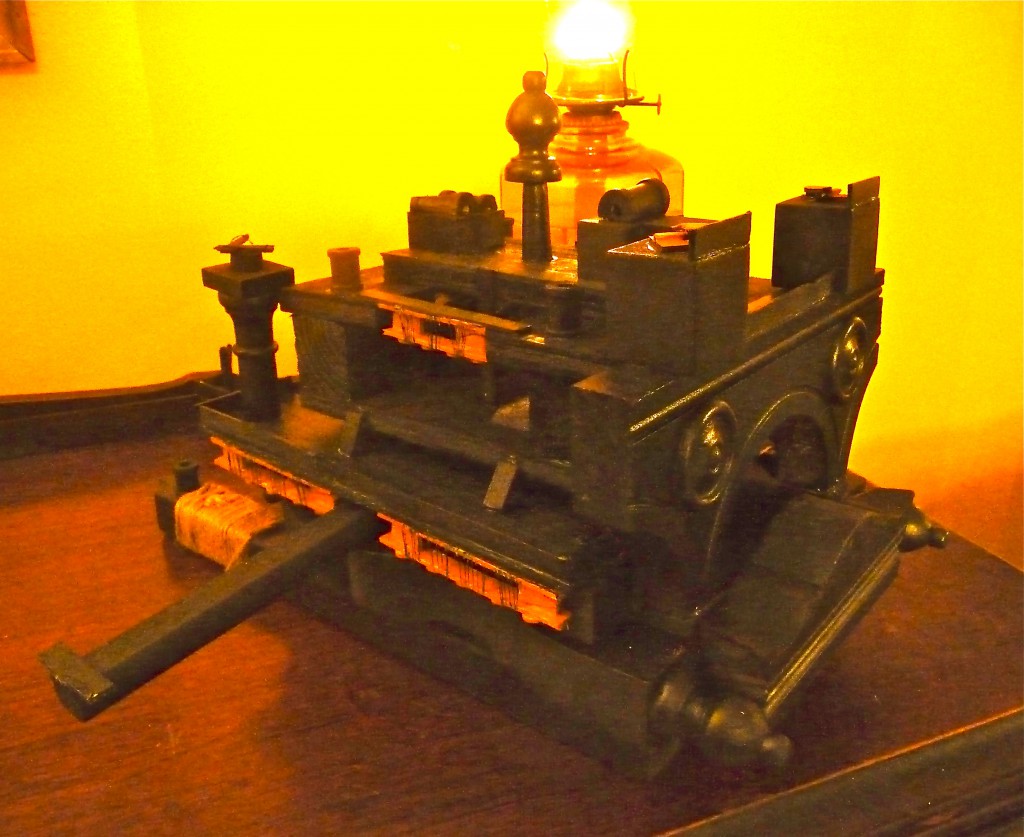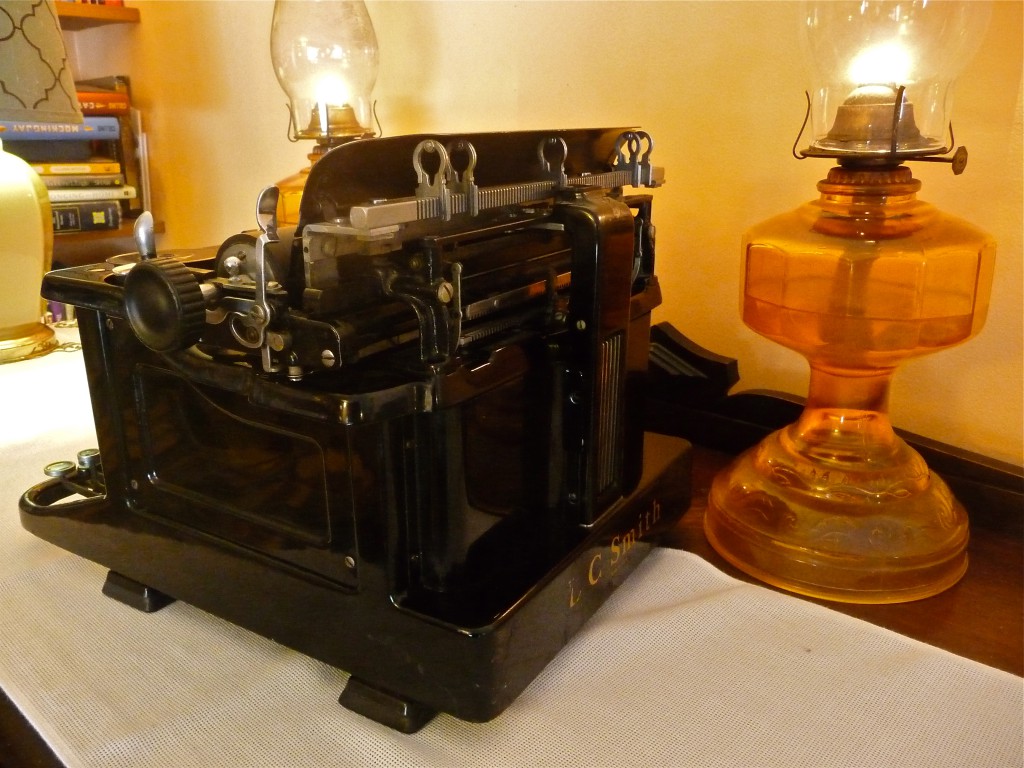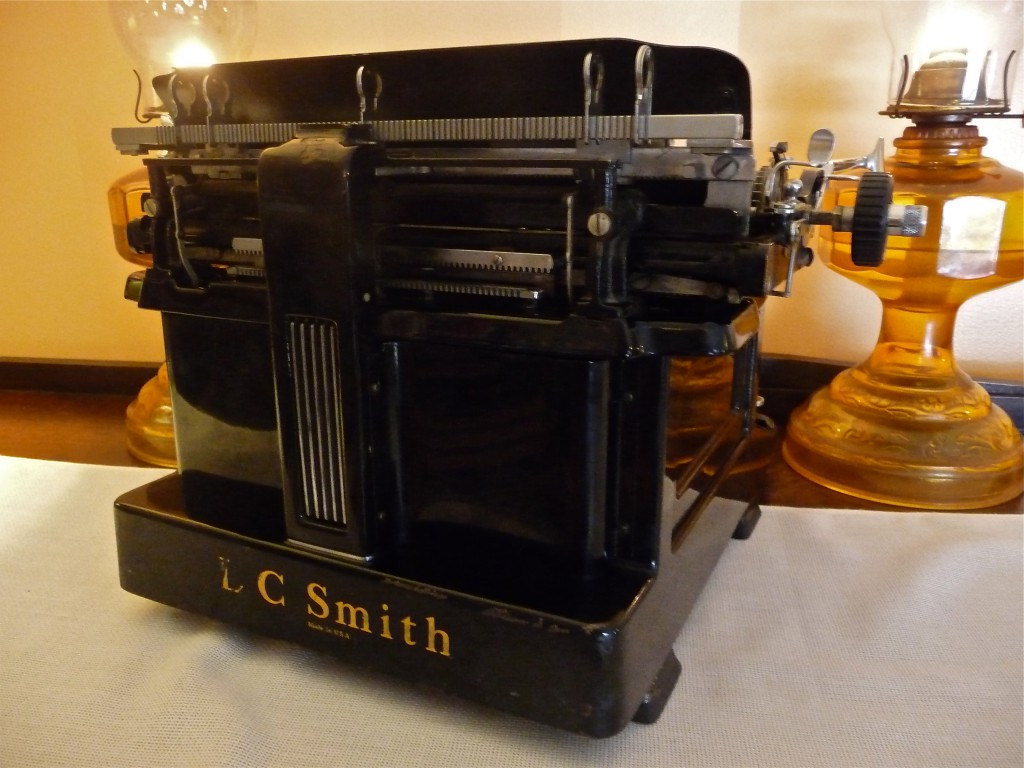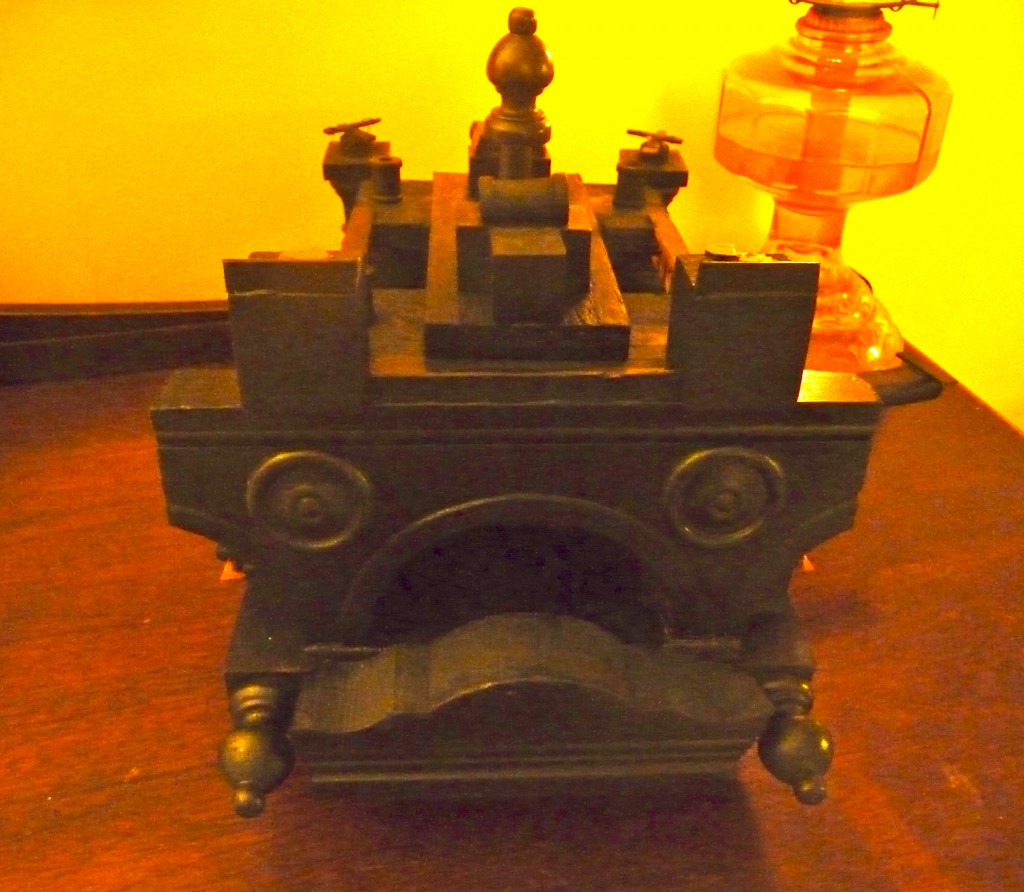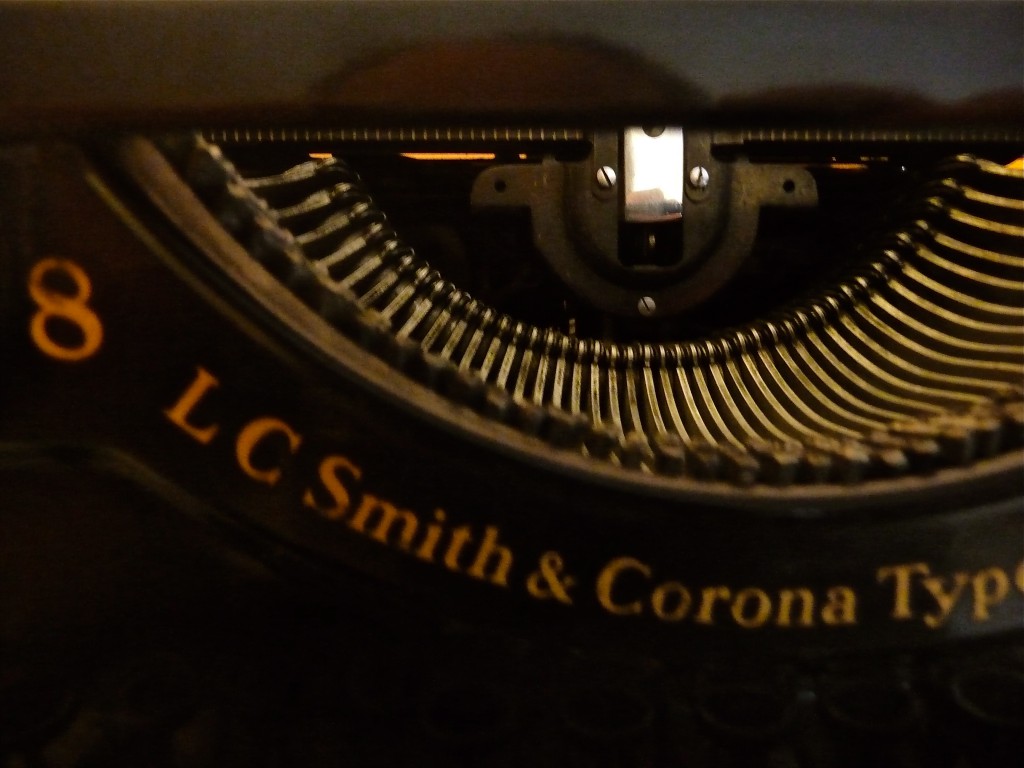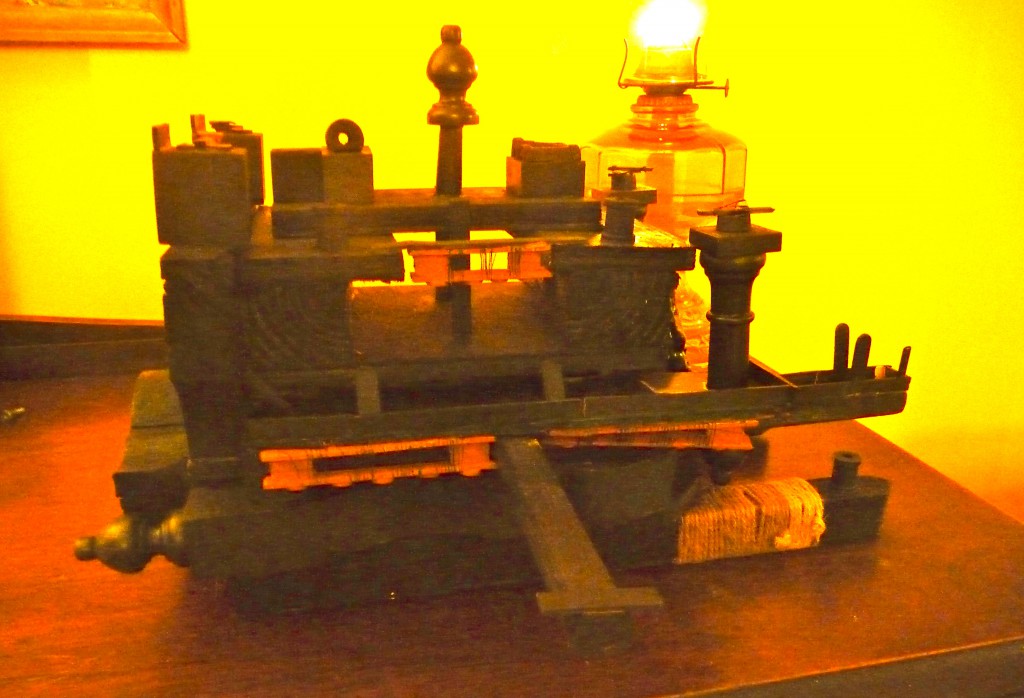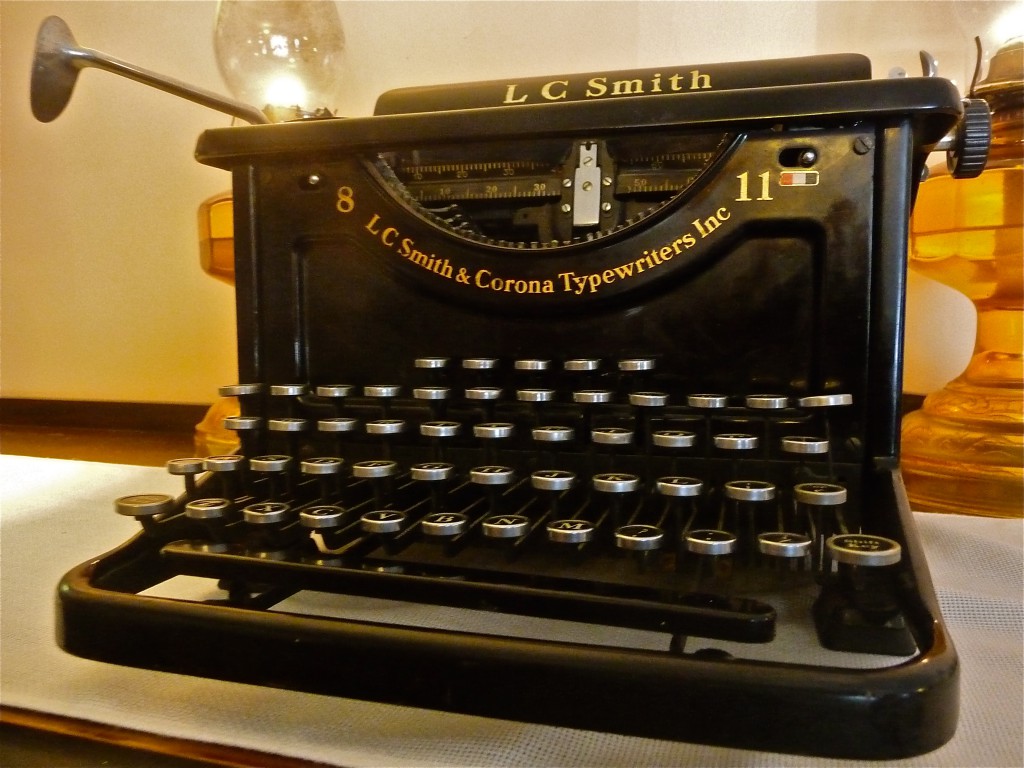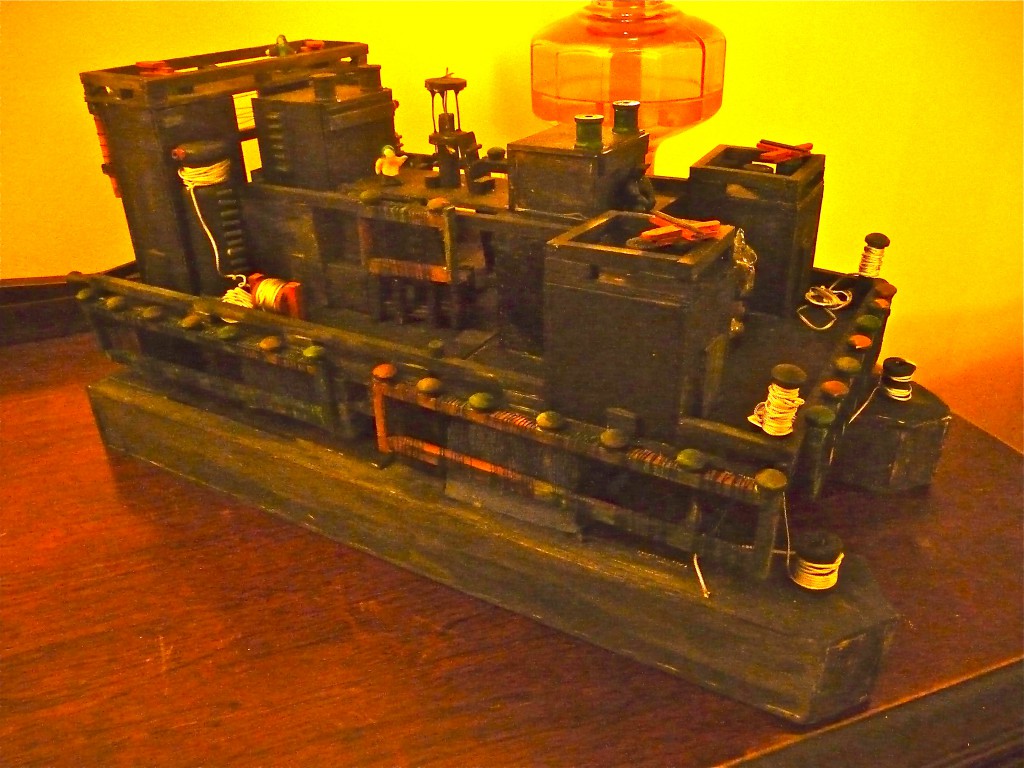Little by little, in breaks from checking galley proofs, I’ve had the joy of cleaning up this beautiful octogenarian typewriter, which brings our “fleet” up to five:
This was a miraculous find on eBay, being sold by a nice couple in Gibsonia who acquired it at an estate auction. I was stunned to find this machine in good condition so close to home and at the price they were asking!
According to the Typewriter Database, this particular machine was built in 1935, a mere ten years after the Smith-Corona merger. When this wonder came out of the factory, my Aunt Ruth was nine.
Although it was in remarkable shape for its age, it required a lot of cleaning up, which I greatly enjoyed! If only one could make a career of it in this day and age, I would love to learn the trade of typewriter repair! This model is sensibly built with side and back panels that unscrew, allowing access to the insides . . . and it was like going into a shadowy, grand old building, locked up for perhaps eighty-one years, its parts grimed with the dust and cigarette smoke of the decades (for pretty much all offices of the past were filled with clouds of cigarette smoke). I had my hands full with the cleaning, so alas, I didn’t get pictures of the process, but here are my tools:
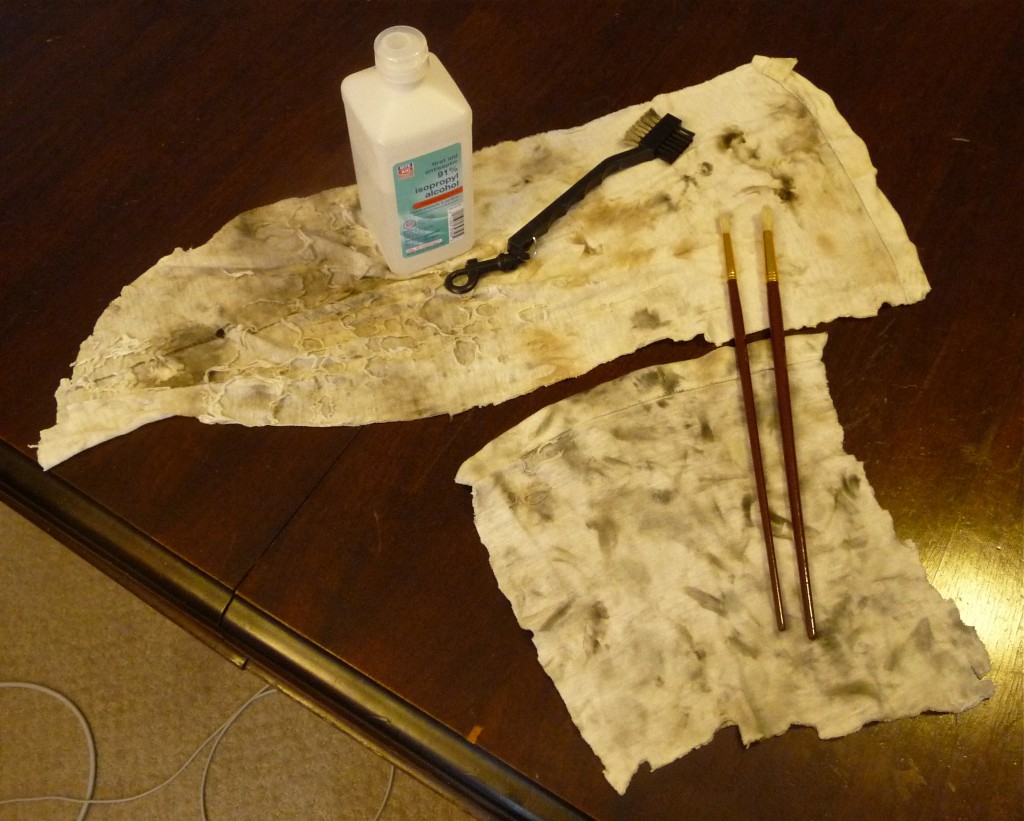
Rags, rubbing alcohol, long-handled paintbrushes, and a brush from Trader Horn designed for golf equipment: wire bristles on one side, fiber bristles on the other.
See that dirt on the rags? It’s all from this typewriter — the gunk of old oil and dust, and the brown of cigarette fumes. I also used various screwdrivers and Q-tips, and Endust to polish up the outside surfaces when I had it all cleaned and put back together.
Look at that nice, clean “smile”! The key bars were all dingy brown. I cleaned them all one by one with the alcohol and rags — the letter slugs and the entire lengths of the bars, everywhere I could reach. Now they’re bright metal-color again!
When I acquired the typewriter, the X key was sticky. It would go up but wouldn’t come back down without a nudge. It simply needed some cleaning from the machine’s underbelly. I had a moment of worry after I’d cleaned everything with the alcohol, because suddenly more of the keys were beginning to stick! But I figured out the problem: I’d cleaned away the old grease, so now clean metal was rubbing clean metal. Small amounts of sewing machine oil, applied with a Q-tip, soon had all the keys moving with lovely smoothness. For the mechanically-minded, I’m sure this is no big deal, but I was very proud of myself. I got this amazing old writer’s friend gleaming and working well again!
It seems the LC Smith #8 was known as “the Silent 8.” I’m not sure why. It sounds like a typewriter — a most pleasant sound, but chattery. But perhaps I can’t hear the silence because my ears are so attuned to the purr of computer keys. It would be interesting to hear other typewriters of the thirties. Were they noisier?
My only misstep was losing one of the tiny, tiny screws from a back plate somewhere inside the machine. Try as I might, I never did recover it. It doesn’t seem to be interfering with any of the workings.
That top row of keys is a decimal tabulator.
I wonder what work has been done on this machine over the years. What letters were written? Did it serve in a business office? Was it used in a home? Has it belonged to other writers? I wonder if it’s written any stories in its 81 years . . .
At any rate, it’s fascinating how the lines of existence intersect. This machine has been somewhere for the half-century of my life. It was a mere 31 years old when I was born. Was it in regular use then, or already in a closet, on a shelf? What was it doing when I took my first steps, when I graduated from high school, when I was immersed in Koine Greek . . . when I went to Japan? What was it doing when I got my first computer, sold my first book, packed up my parents’ forty years of shared belongings? Or when my life intersected Julie’s? And where will it go when I am walking the streets of glory?
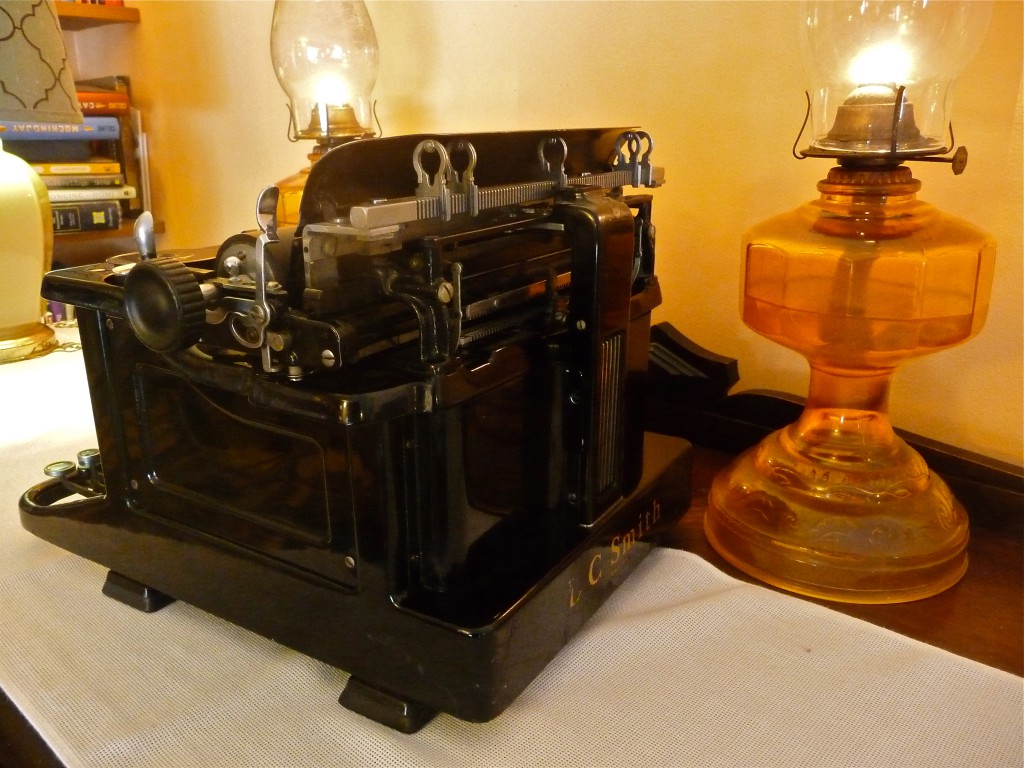
Back view: it occurs to me now how typewriters of this sort, with their shape and color, influenced my grimalkin ships in THE FIRES OF THE DEEP.
Did this typewriter labor toward economic recovery after the Depression? Did it send letters to soldiers who fought in World War II or Korea or Vietnam? Did it giddily report that men had walked on the moon? Did it mostly (like most of us) just put in its honest and humble days filling out forms, doing nonprofit work, enrolling students, registering patients, doing taxes, preparing for meetings, making it possible for people to do things? Now the L C Smith has come to live here, in a home where it’s respected and cherished. And yes, it will have work to do again, along with its four companions!
Am I right? My grimalkins are pretty much flying typewriters!
This L C Smith #8 is very close to the model we had at home when I was growing up (Aunt Ruth’s first typewriter), so it was part of my world, handling it, always seeing it in the warm shadows of our house, among the books.
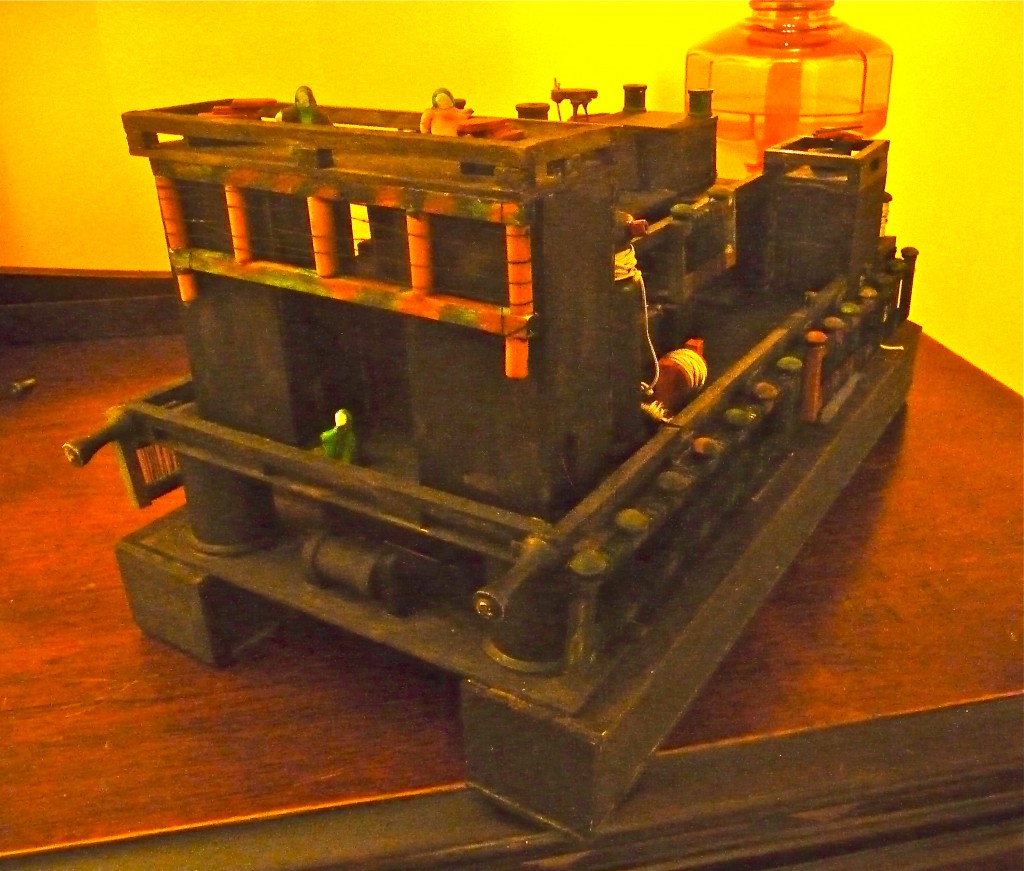
My second model of the grimalkin APOLLYON, made mostly of balsa wood (and to scale with the ship as it appears in the book) — this is a view of the stern. Note the crew members on the war deck (manning the catapults) and the aft deck.
Why should it not morph, in my imagination, into a balloon-ship, cruising through the deep-earth passages of the Hurlim world?
I guess I haven’t changed much. In that summer of 1992 or 1993, I had to build two models of the Apollyon before I could get down to the actual work of writing that book. Now, in 2016, cleaning up this dear old machine seems an essential task before I can finish my galley proofs and line-edits. Writing is a chord, not a single line of notes. All these things must be done, even those that would seem idle time-wasting to some.
In the photo above, that arch of the aft deck is reminiscent of the typewriter’s arc of key arms. Never realized it until now!
To quote Norman Maclean: “Eventually, all things merge into one, and a river runs through it. The river was cut by the world’s great flood and runs over rocks from the basement of time. On some of the rocks are timeless raindrops. Under the rocks are the words, and some of the words are theirs. I am haunted by waters.”
So it is. The past is the present, and the order of things is ultimately meaningless. The real things, the best things, are not bound by time.
Here’s my mom, writing in “Old Oak Road”:
Something whispered in their ears — something spoke from out of time — /. . ./
From the places where they played — /. . ./
Children living by my side
Read the messages they found
From the half-forgotten times . . .
Use the gifts. Tell and enjoy the stories. Love the people. Treat creation well. Clean old treasures up, and you may learn the most unexpected things.
Okay — back to the galley proofs, so that — Lord willing — you can read A Green and Ancient Light in June!
